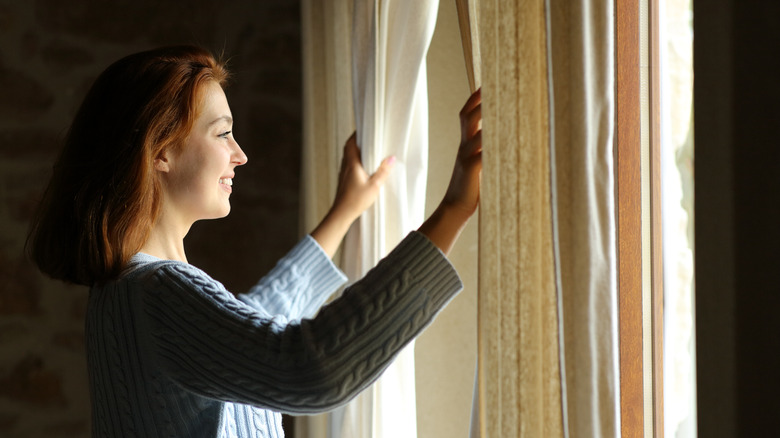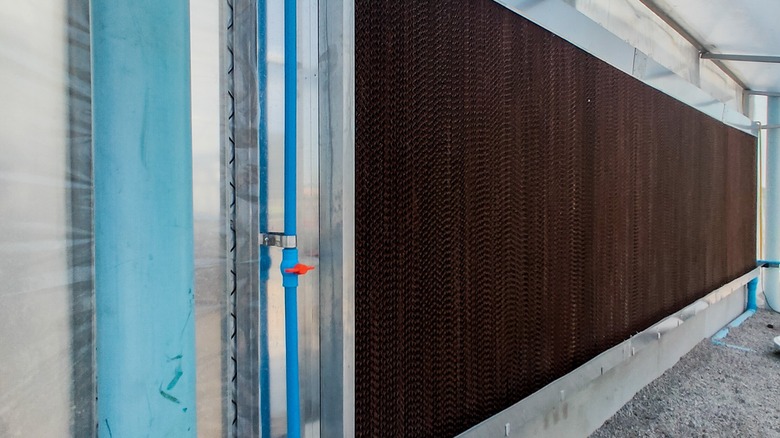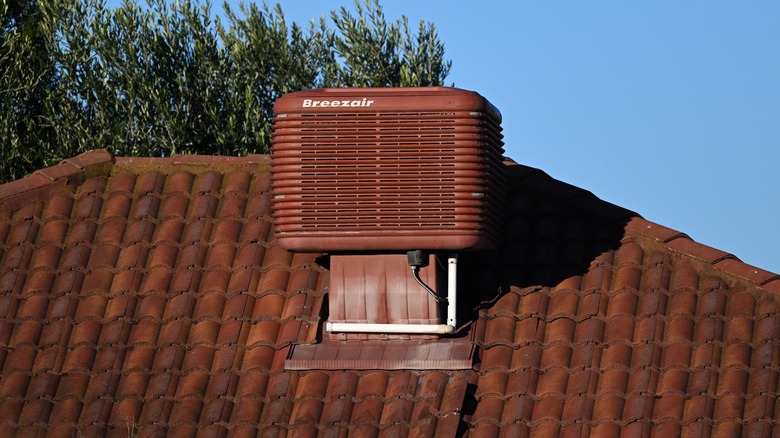The Bizarre Curtain Hack That Claims To Keep Rooms Cool In Summer Heat. Does It Work?
In the midst of a sweltering heat wave, you really just want to push a button and make it go away. When StackExchange user @sustainablecoolingsolutions had an idea for cooling a small room, in many ways, it was the opposite of that simplicity — but they were looking for an approach that was cheaper and more sustainable than the average AC window unit. The idea was to evaporate the water from a wet curtain using a ceiling fan, thereby cooling the room. What they had stumbled upon was an approach called evaporative cooling, and they wanted to know if a wet curtain could be situated to cool a room through evaporation. The answer, it turns out, is an unequivocal "yeah, but ..." It works, but there are a lot of conditions that must be met.
What @sustainablecoolingsolutions had stumbled upon was nothing new. Systems based on evaporative cooling have been around for millennia, from ancient structures of earthenware pots to what is commonly called a "swamp cooler," which is a fan that blows air across a moistened wick. But there's an even older evaporative cooling process that you're already familiar with, even if you don't much care for it: sweating. Heat in the air (or on your skin) is converted to latent heat in water vapor, which reduces the temperature of the air (or skin). Common vapor-compression air conditioners use this principle, but in a way that deals with some of the limitations of the swamp cooler approach.
Cooling walls that work
There is a working method that's more similar to the wet curtain idea than a swamp cooler, and it's used in greenhouses throughout the world. In its most common form, it looks like a wet cardboard wall, which is essentially what it is. In front of windows or vents you construct a wall of thick cellulose pads. At the top of the pads is a pipe that distributes water to the pads to keep them wet, and at the bottom is an open channel that catches any runoff water and drains it to a sump where it's cycled back through the pads.
Since a lot of water evaporates along the way, there also has to be some way of constantly replenishing the water in the sump, usually something like a water hose activated by a float switch when the water level drops too far. At the other end of the greenhouse, large fans exhaust air from the structure, drawing it constantly through the wall of wet pads where the water's energy is converted to latent heat in vapor, cooling the air. All of the little technical details that are required for such a system to work are contained in this model. The same qualities that make evaporative coolers work in a greenhouse also make it ideal for transforming a patio for work or play. For indoor spaces, it gets a little more complicated.
What has to happen for the evaporative cooling wall to work
Evaporative cooling works best when the relative humidity is low. You have to be able to remove the humid air constantly like an exhaust fan. For the greenhouse method, you have to be prepared to deal with high humidity and large expanses of water and wet cellulose. For indoor residences, however, the EPA recommends a relative humidity of 30 to 50%. Some report a 2 to 3% increase in humidity for each degree of cooling, so if your starting indoor humidity was only 30% and you cooled the room 15 degrees, you might end up with 60 to 75% humidity ... too high in general, and far too high for rooms like bathrooms that already struggle to reach healthy humidity levels.
A working "wet curtain" approach has to have all of these components. Ideally, you're in a low-humidity area. You need a relatively coarse-weave curtain so air can move through it. The curtain needs to stay wet (@sustainablecoolingsolutions proposes drip irrigation tubing), catch the un-evaporated excess water, pump it back to the top, and bring in replacement water. Then, you'll need an open window behind your curtain and another across the room with a fan blowing out. In all, this hack is something you might pull off, but it could be better to opt for that window unit or wait for some of the emerging air conditioning technologies that could be coming to your home soon.


